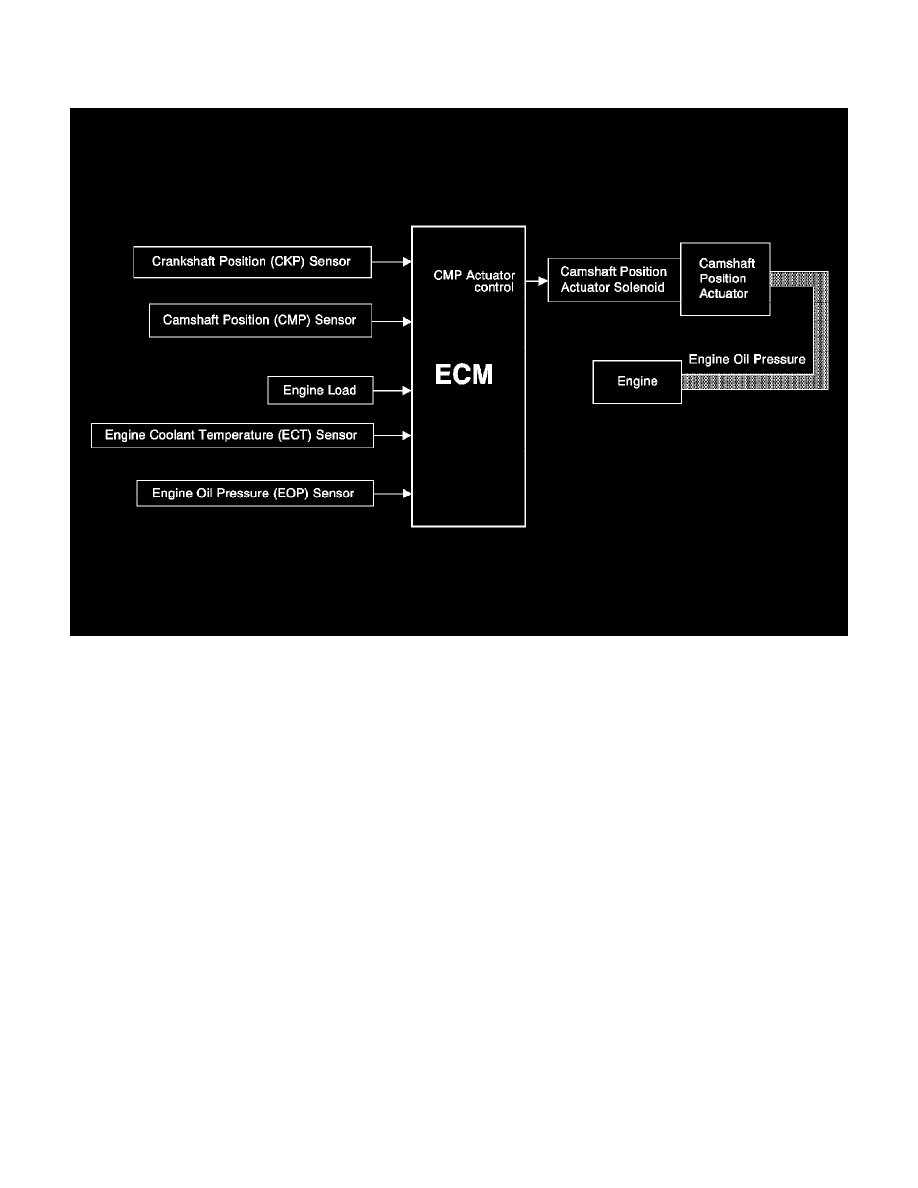Colorado 4WD V8-5.3L (2010)

Variable Valve Timing Actuator: Description and Operation
Camshaft Actuator System Description
Camshaft Position Actuator System
The camshaft position actuator system is an electro-hydraulic operated device used for a variety of engine performance and operational enhancements.
These enhancements include lower emission output through exhaust gas dilution of the intake charge in the combustion chamber, a broader engine torque
range, and improved fuel economy. The camshaft position actuator system accomplishes this by, changing the angle or timing of the camshaft, relative to
the crankshaft position. The camshaft position actuator simply allows earlier or later intake and exhaust valve opening, during the four stroke engine
cycle. The camshaft position actuator cannot vary the duration of valve opening, or the valve lift.
During engine OFF, engine idling, and engine shutdown conditions, the camshaft actuator is held in the park position. Internal to the camshaft position
actuator assembly is a return spring and a locking pin. During non-phasing modes of the camshaft, the return spring rotates the camshaft back to the park
position, and the locking pin retains the camshaft position actuator sprocket to the camshaft. The engine control module (ECM) can only command the
camshaft position actuator to retard the valve timing from the park position, or advance the valve timing back to the park position.
Camshaft Position Actuator System Operation
The camshaft position actuator system is controlled by the engine control module (ECM). The ECM sends a pulse width modulated, 12 V signal to the
camshaft position actuator solenoid to control the amount of pressurized engine oil, into the camshaft position actuator. A low reference circuit, or
ground wire between the camshaft position actuator solenoid and the ECM completes the electrical circuit. The frequency of the pulse width modulated
signal is fixed at 150 Hz. To regulate the pressurized engine oil into the camshaft position actuator, the solenoid uses electromagnetic force on the
solenoid pintle to pulse the oil control spool valve. The pressurized engine oil is sent to unseat the locking pin, and to the vane and rotor assembly of the
camshaft position actuator, to either retard or advance the valve timing. The ECM will control the amount of ON time applied to the solenoid, through
the 12 V signal from the ECM.
The ECM uses the following inputs to calculate the optimum valve timing before assuming control of the camshaft position actuator:
*
Engine speed
*
Manifold absolute pressure
*
Throttle position angle
*
Camshaft position sensor
